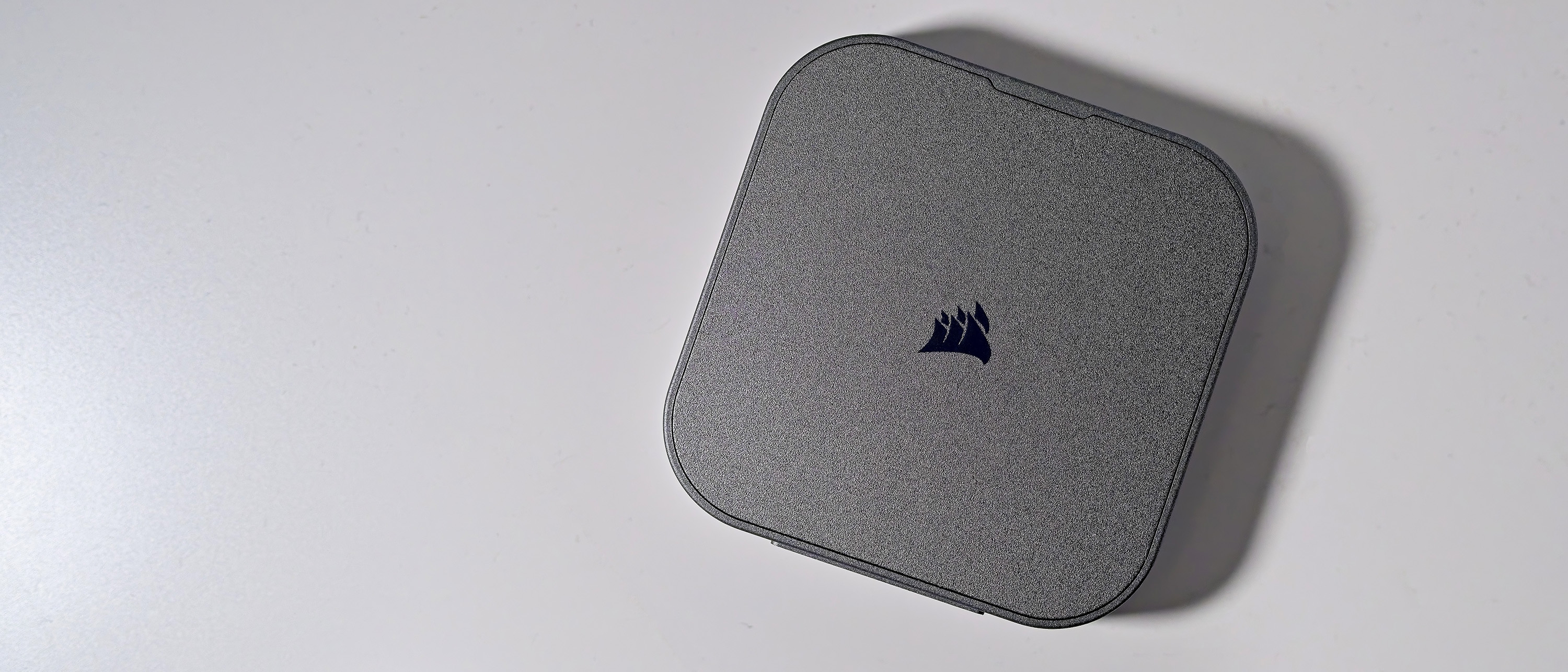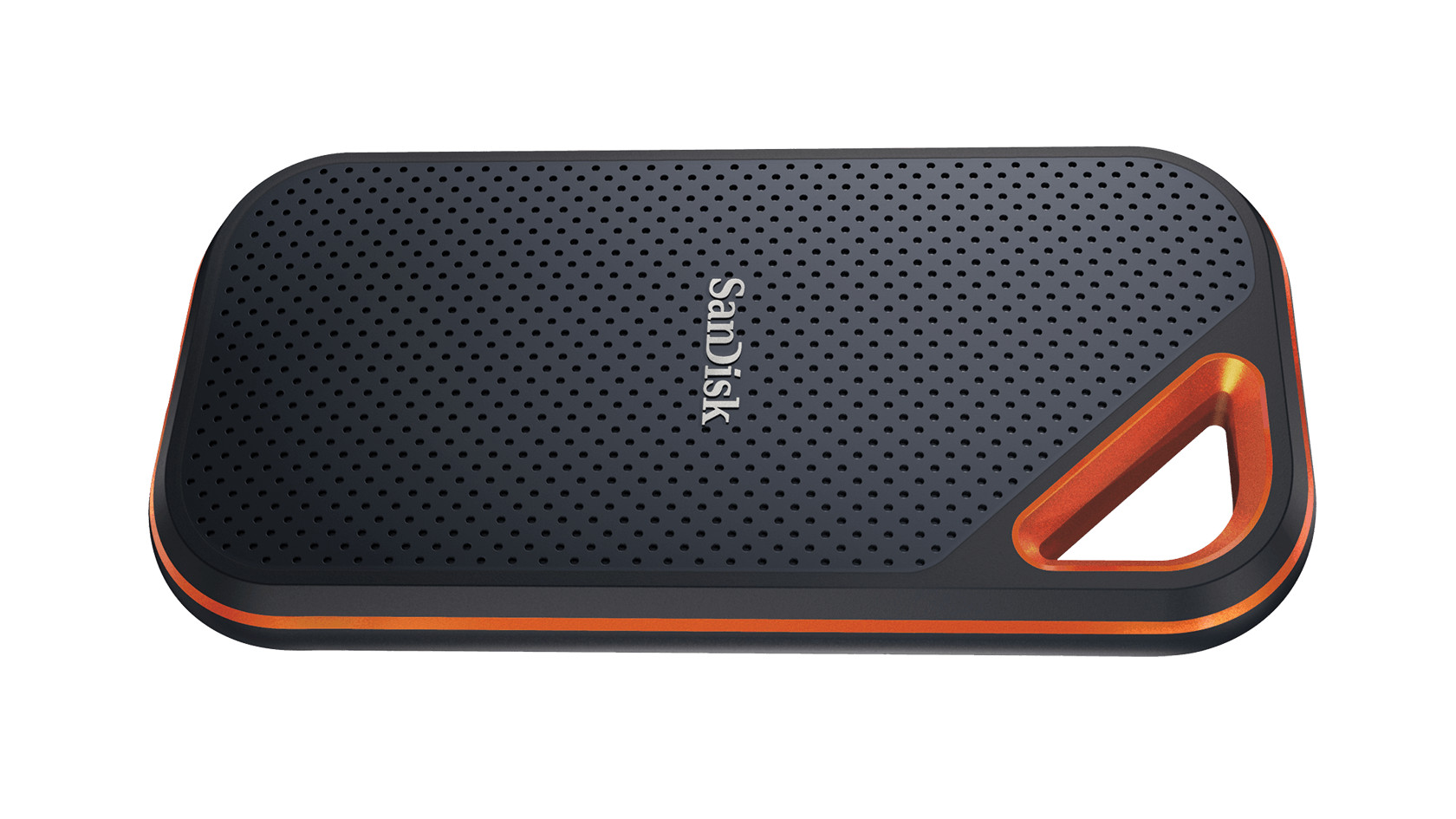Our Verdict
Fast, portable and magnetic, the Corsair EX400U SSD is an ideal portable drive for those making movies with an iPhone, or anyone looking for a quick bit of external storage for a laptop.
For
- Speedy USB4
- MagSafe ring
- Up to 4TB
Against
- USB 3.2 drives are cheaper
- Only sticks to some things
Why you can trust Creative Bloq
The best portable SSDs need to go pretty far to be really interesting. If they’re not the fastest or the cheapest, why would you look at them? The Corsair EX400U distinguishes itself by not only being pretty fast, but with a magnetic MagSafe ring on the back it puts itself firmly in the sights of iPhone filmmakers and social media professionals, as well as anyone who wants to snap it to the metal parts of their desk.
Key specifications
Capacity: | 1TB, 2TB (tested), 4TB |
Interface: | USB4 |
Dimensions: | 64 x 64 x 12mm |
Weight: | 92g |
Design, build and display
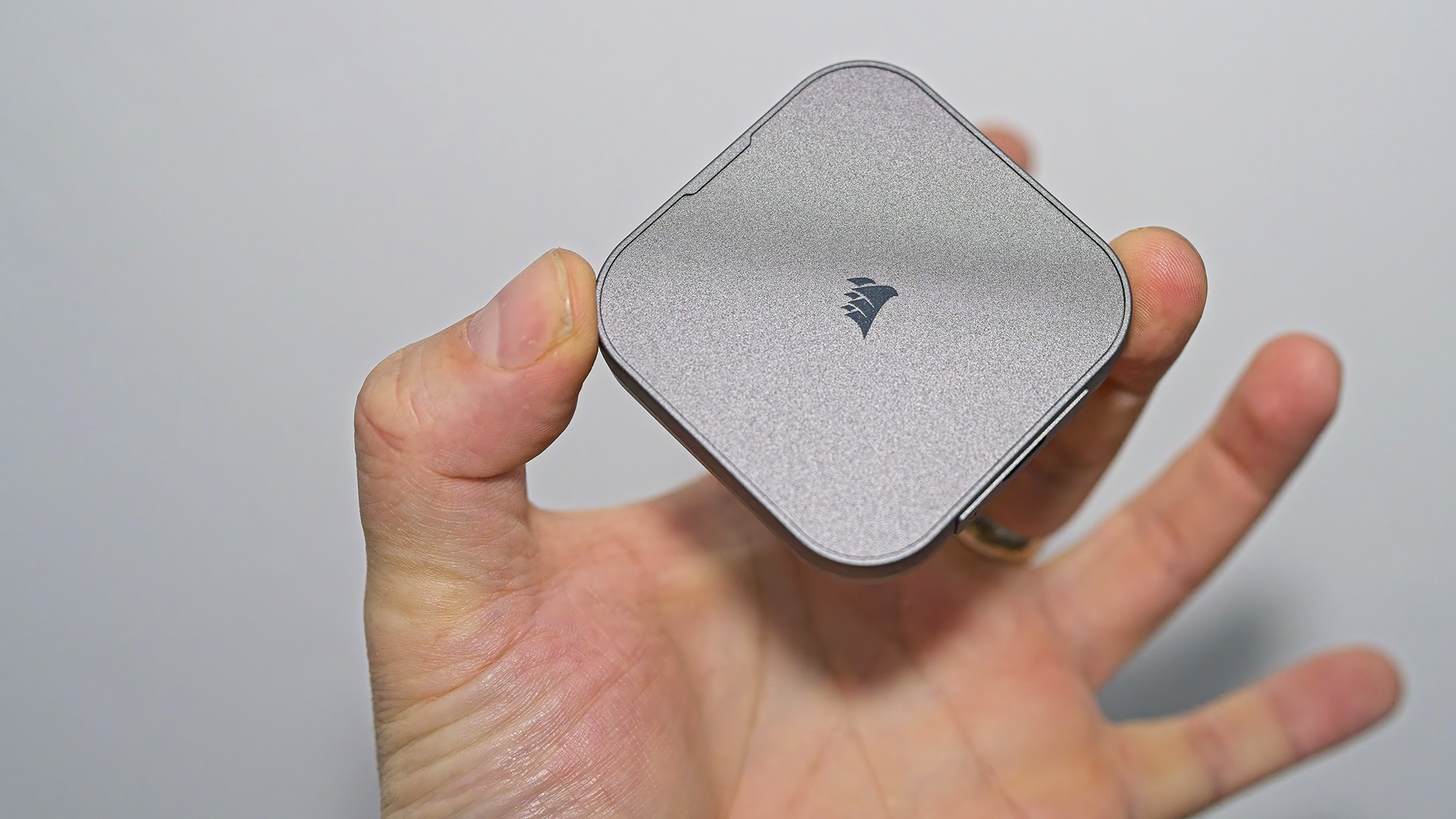
• Small and square
• Customisation options
The Corsair EX400U SSD is fairly conventional, taking the shape of a square with rounded corners rather than that of a sheep or large 3D dodecahedron. There's a single USB-C port to break up the edges, and a white LED that indicates activity, tucked away by the USB port where you’re less likely to see it easily.
It’s both wider, thicker and heavier than the Crucial X10, but smaller than the SanDisk Extreme Pro (which is a rugged drive). There's nothing but the Corsair logo on the top, and underneath just the usual regulatory small print and a white circle that indicates the MagSafe connector.
The drive is obviously plastic, and doesn’t come with an IP rating, but feels solid enough in the hands. It can be used down to 0°C, but sadly even in a British summer this wasn’t something we could test. There are a few customisation options on the Corsair website, including two types of cherry blossom print, but otherwise it only comes in grey.
Design score: 3/5
Features
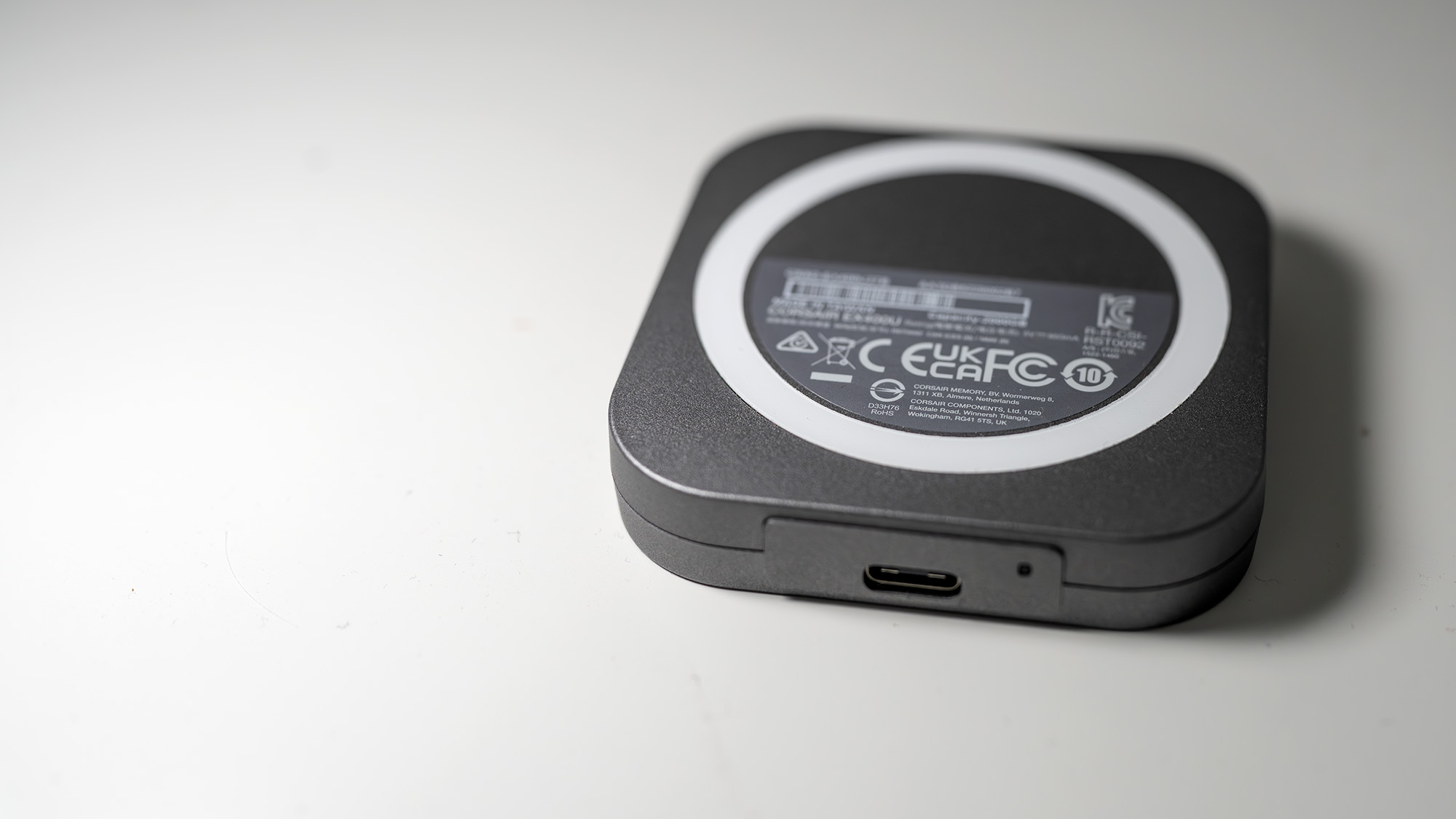
• Speedy connector
• MagSafe ring
Daily design news, reviews, how-tos and more, as picked by the editors.
USB4 is a fast connection capable of up to 40 Gigabits per second (Gb/s), which should mean maximum transfer rates of as much as 5000 MB/s. There's always a little overhead to lower the rate, however, and just because a drive has a USB4 interface doesn’t mean it’s going to completely saturate it.
It’s most common on PCs right now, though you can still use the drive at almost full speed on a Mac with Thunderbolt 4, and Thunderbolt 5 should give identical results.
The magnetic ring underneath the SSD is an interesting feature, and has a couple of potential uses. The most obvious one is to attach the SSD to the back of an iPhone (12 or later have MagSafe, but really you'll want a Pro version of the 15 or 16 for their faster USB-C ports, and as they’re USB 3.2 they’re still not fast enough to max out this drive) using the MagSafe circle.
The two pieces of technology snap together very firmly, so firmly it can be a bit of a struggle to get them apart again if you’re not a professional finger wrestler or pianist. It’ll stick to the back of an iPad Pro (with its useful USB4 port) too, though not nearly as firmly and the cable tension tends to pull it off. It mounts up as an external drive perfectly well under iPadOS.
The second is that you can attach it to just about any suitable metal piece of furniture. We snapped the drive to a monitor riser and the leg of a desk, though it wouldn’t stick to the foot of an iMac or a Fractal Terra PC case, as these are the wrong kind of metal. It means it’s extremely handy to hide out of the way, the cable leading to the back of your PC or Thunderbolt dock the only clue to its existence. You can have a bit of fun wandering round the studio finding things it will stick to, and if your fridge needs expanded storage, it's perfect.
There's a short (but still longer than some) braided USB-C cable included in the box, and it’s good enough to get the full speed out of the drive.
Feature score: 4/5
Performance

• Very fast reads
• Write speeds slightly lower
Before we look at the maximum transfer speeds of the EX400U, some context. A USB 3.2 drive can be expected to read data at around 1,000MB/s - we got 1,053MB/s out of the Crucial X9. An older, internal PCIe 3.0 M.2 drive we tested managed to read at 2595.87 MB/s (and we’ve seen a newer Samsung 990 Pro PCIe 4.0 drive hit 7,140 MB/s, recently beaten by the PCIe 5.0 Crucial T705 SSD at 14,125.62 MB/s), while the Crucial X10 with its more exotic USB 3.2 x2 interface managed 1877.8 MB/s. The USB4-equipped Sandisk Extreme Pro could do it at 3691.5 MB/s. Write speeds are usually in the same ballpark as read speeds, but can be either higher or lower.
With that in mind, here are the test results for the Corsair drive:
USB4
Read: 4062.89 MB/s
Write: 3700.75 MB/s
USB 3.2
Read: 1090.66 MB/s
Write: 1087.80 MB/s
Thunderbolt 4
Read: 4019.44 MB/s
Write: 3128.97 MB/s
Yowzah. It’s not as fast as an internal drive or the Lacie Rugged, with its Thunderbolt 5 port (6956.33 MB/s read) but it doesn’t cost as much either.
This is an excellent result for the little drive, though it’s limited by the interface you use and as you’d expect it performs best on faster connections such as USB4 or Thunderbolt.
Performance score: 5/5
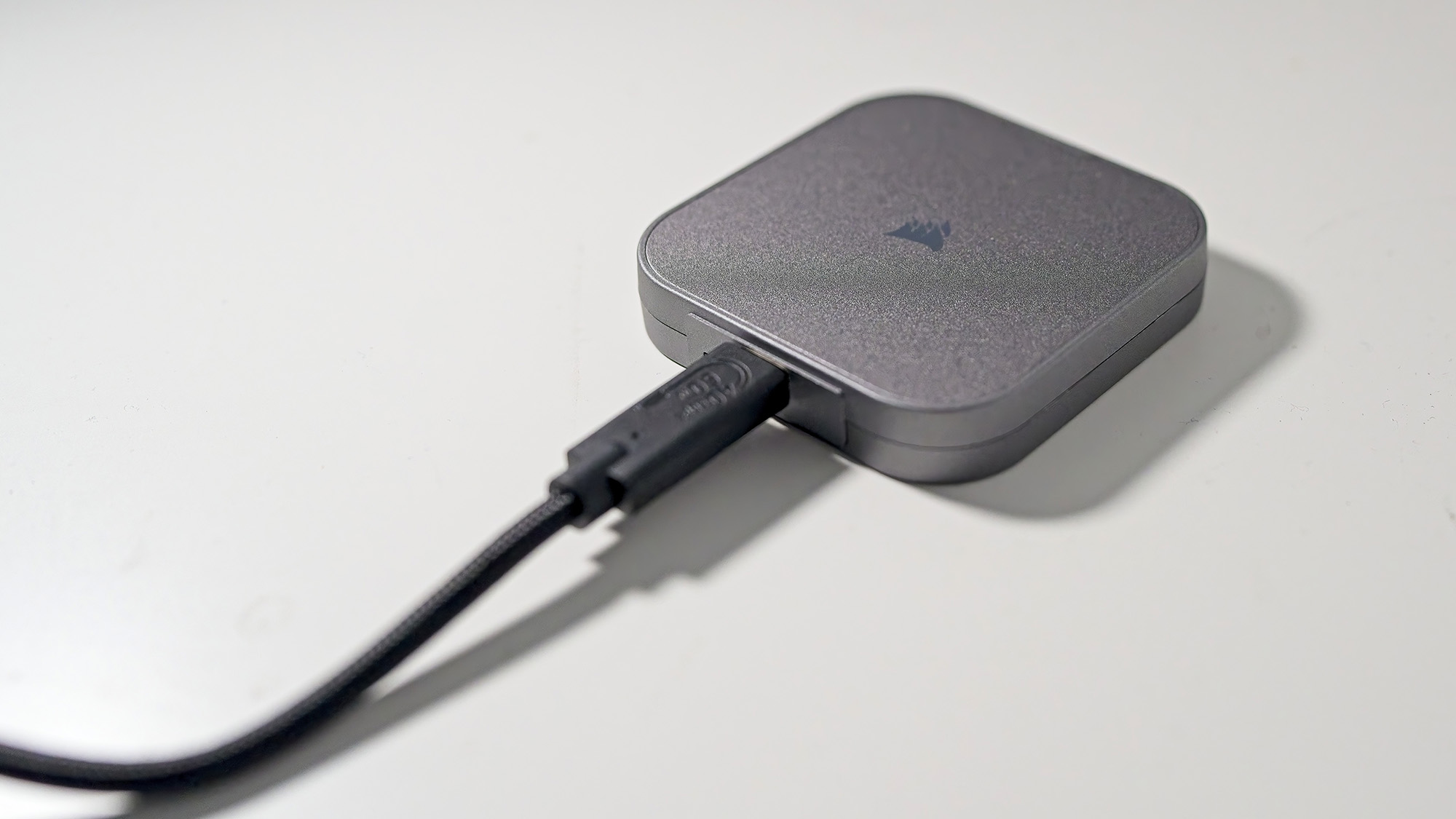
Price
At £194.99 / $199.99 you’ll pay a bit more for this 2TB drive than a USB 3.2 one, but then it’s a bit faster. To go much faster than this SSD, you’d need the LaCie Rugged, or a similar Thunderbolt 5 drive, and that means paying a lot more.
Value score: 4/5
Who is it for?
• iPhone filmmakers
The MagSafe ring makes it perfect for snapping to the back of a recent iPhone Pro, but you don’t have to use it for that - it’s quite happy attaching to anything ferrous. If you’re not using it with an Apple device, you’ll need a fast port to connect it to, but USB4 is getting more common and it can transfer large video files faster than many other drives.
Attributes | Notes | Rating |
|---|---|---|
Design: | Just a plastic square, but there are visual options. | 3/5 |
Features: | USB4 and MagSafe are a good combo. | 4/5 |
Performance: | Makes the most of its USB4 port. | 5/5 |
Value: | In the middle between cheaper slower drives and pricier faster ones. | 4/5 |
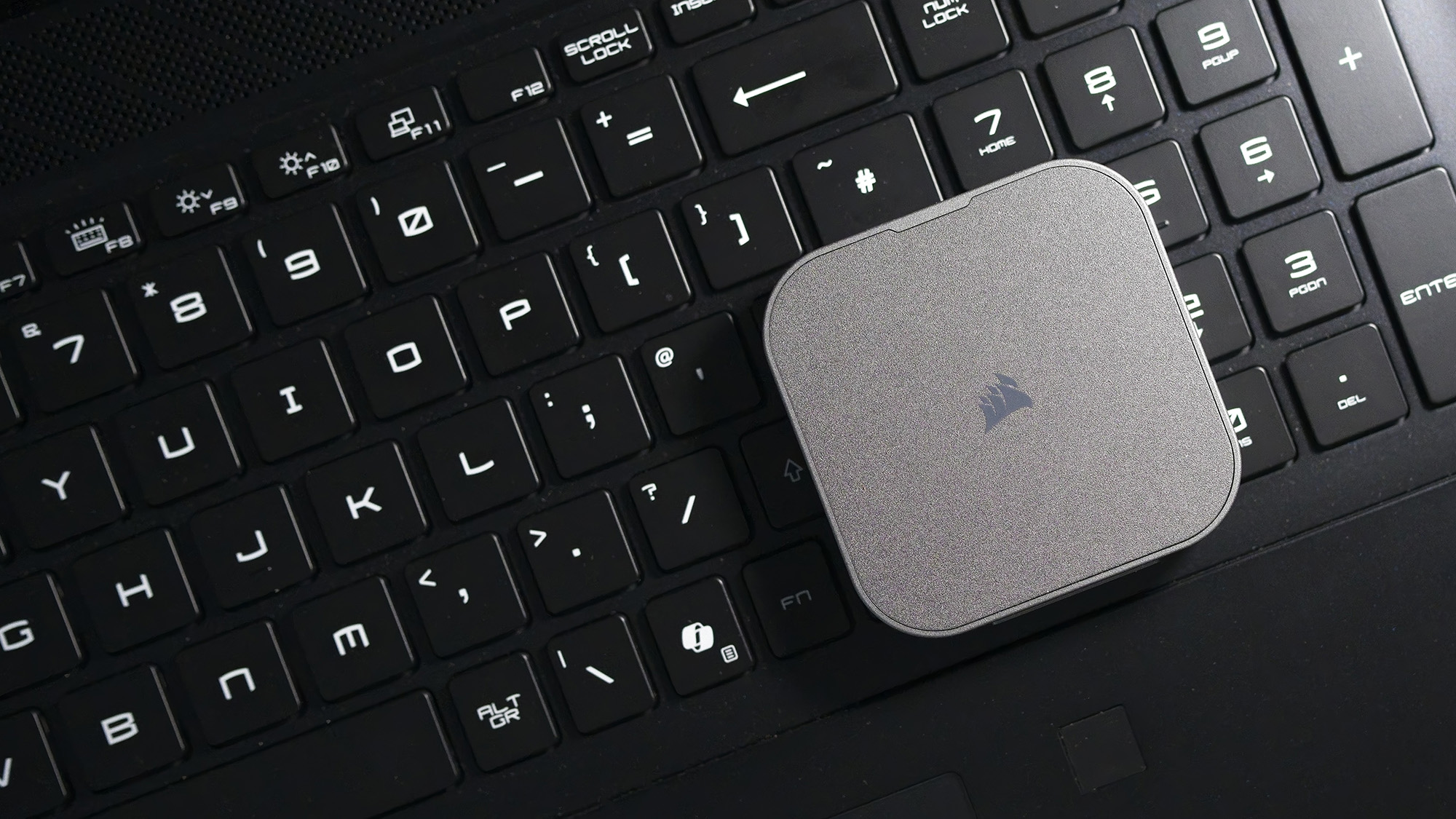
Buy it if...
- You want fast external storage
- Without spending an absolute fortune
- And perhaps you have an iPhone too
Don't buy it if...
- You can’t make the most of its speed
- You need a rugged drive
- Or Thunderbolt 5
Also consider
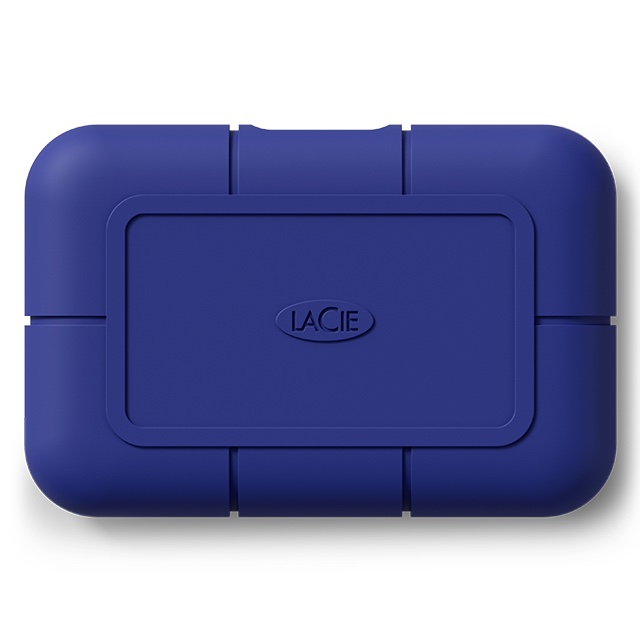
If you need the fastest external portable SSD, this is it. The Thunderbolt 5 interface allows it to scream along, sucking up video footage or other large data files at tremendous speed. It looks good too, but it’s a specialist device and is priced as such.
out of 10
Fast, portable and magnetic, the Corsair EX400U SSD is an ideal portable drive for those making movies with an iPhone, or anyone looking for a quick bit of external storage for a laptop.

Ian Evenden has been a journalist for over 20 years, starting in the days of QuarkXpress 4 and Photoshop 5. He now mainly works in Creative Cloud and Google Docs, but can always find a use for a powerful laptop or two. When not sweating over page layout or photo editing, you can find him peering at the stars or growing vegetables.
You must confirm your public display name before commenting
Please logout and then login again, you will then be prompted to enter your display name.
